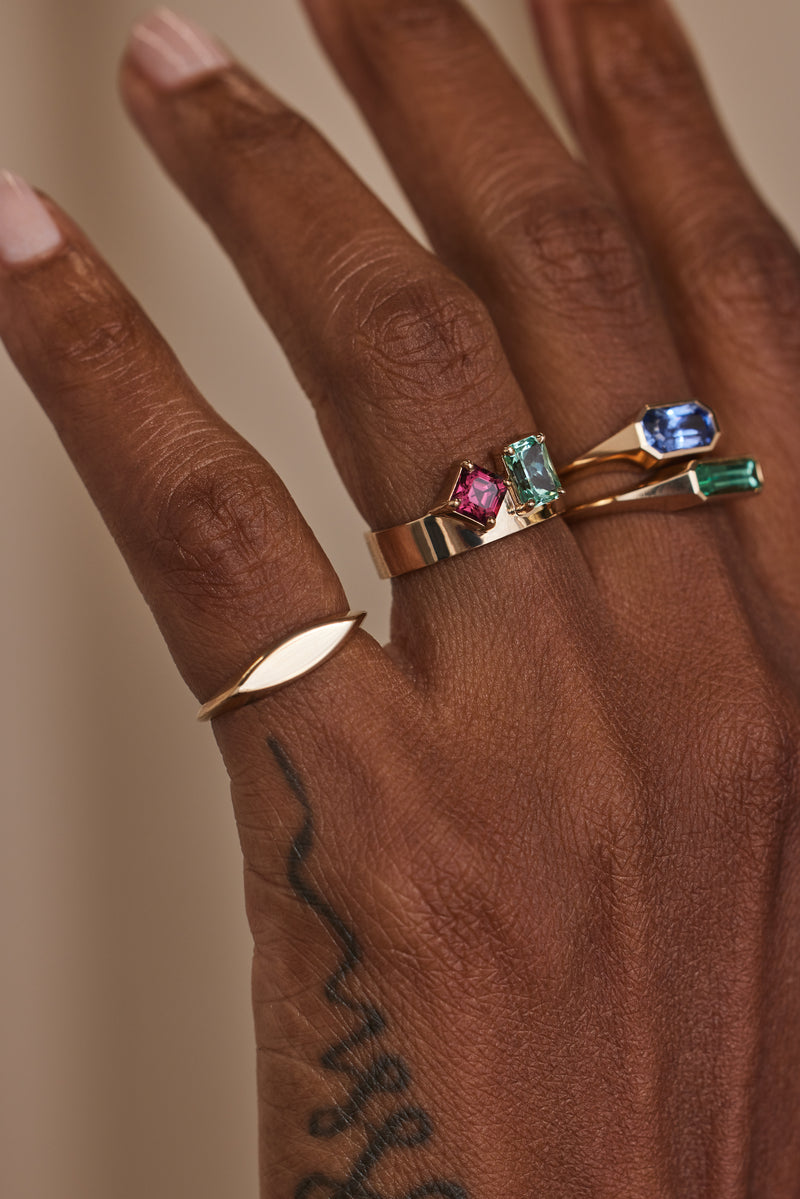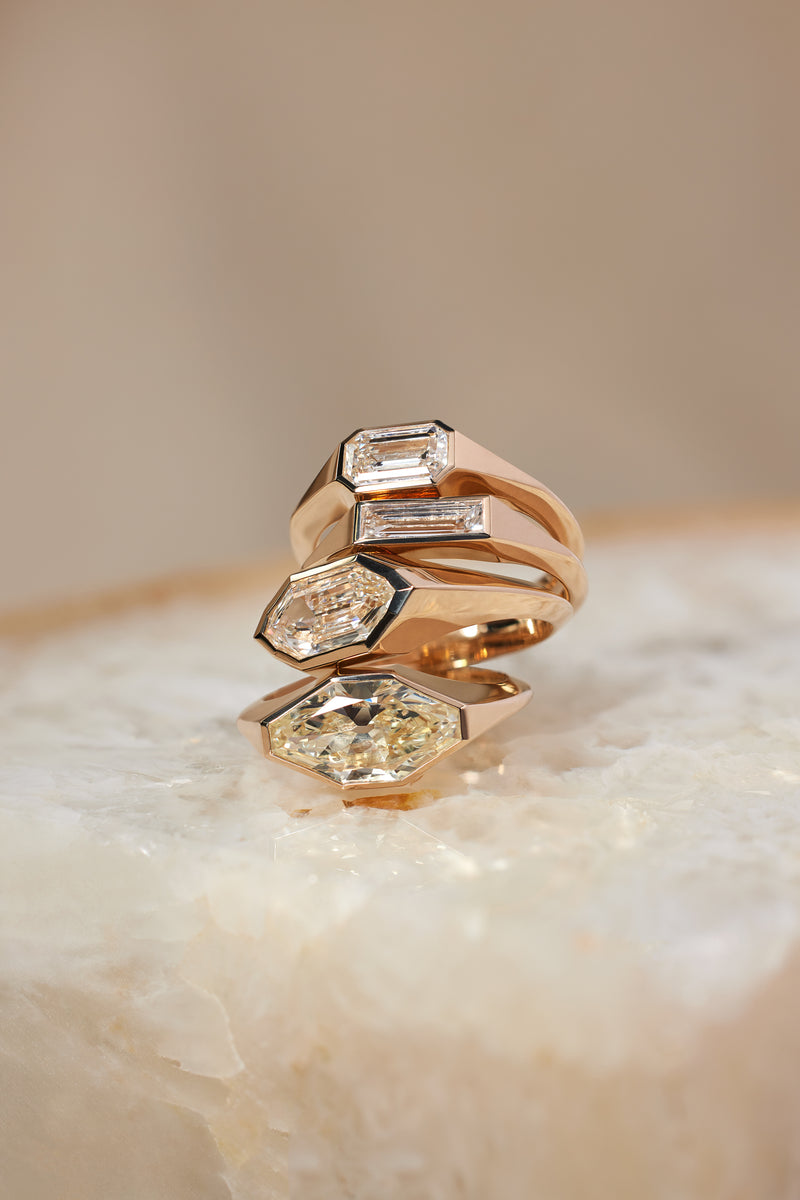Pearl Field Notes
- Posted on 08.04.21
- PEARLS
The pearl capital of the United States isn’t the ocean. Throughout the early 1900s, natural pearls were found in the waterways of the Tennessee River Valley, and created a booming industry until about the 1990s. Only 1 in 10,000 mollusks produce a pearl, so this industry grew based on shells, rather than the rare-to-find gems themselves.
Back then, people would go “toe digging” in the Tennessee River after work to make extra money. They’d wade in as deep as they could, using their toes to pick up mussels and sometimes pearls at the base of the river. Each bucket of mussels would be worth between $40-$100 at the time!


Tennessean shells were then coveted by pearl farmers from Japan, China, Polynesia, and Australia –– they carved nuclei out of Tennessee’s distinctly wide and thick mussel shells, which created distinctly large cultured pearls.

An American mussel shell is chopped and then carved into round beads, which become the nuclei of future pearls
This practice went on well into the 1960s and, as such, 95% of the world’s round, cultured, pearls from this time have a piece of American shell inside them!

Cross-section of Japanese cultured pearls, which grew from nuclei made of American shells until the 1960s.
Although cultured pearls were invented in China in the 13th Century and made mainstream in Japan by the 19th Century, the cultured pearl industry didn’t reach North America until the 1960s.

Chinese cultured pearls, inside the mollusk that grew them.
The First American Pearl Farm
The first American pearl farm was established in 1965 by John Latendresse, also an American shell exporter. He brought culturing techniques from Japan to the Tennessee River Valley, honing the technique for 15 years before his first pearl harvest.
Mr. Latendresse became known as the “Picasso of cultured pearls” because of his unique techniques for culturing difficult pearl shapes –– like hearts, navettes, and teardrops –– all too pointy and disruptive for most mollusks abroad to make.

A page from Lantendresse’s pearl catalogue

The Latendresse family and pearls of varying shapes, all harvested in Tennessee
He also played a significant role in developing new tools and standards for local pearl companies to follow to become more ethical and sustainable in their practices.
What makes a cultured pearl ethical?
Ethical pearl production starts with a mollusk species that are native to its farm location. This allows the farm to give back to the mussels’ original ecosystem, rather than disrupt it with a foreign species. In order to protect Tennessee’s mussel populations and their environment, strict regulations were developed on the age that can be harvested for a pearl farm.

The Tennessee River: Baby mussels are protected from being harvested
The industry started using these metal rings as a tool: if the mollusk fits through the ring, it’s too small and must be released back into the water, where they’ll continue to grow and breed. If the mollusk doesn’t fit through the ring, it’s considered mature enough to have reproduced several times and can be brought to a farm.

Mother shells are then placed into a net allowing ample room for each mussel to feed, grow, and reproduce at a higher rate than on the river floor. The mussels themselves are filter feeders, meaning they naturally filter the water, keeping it clean for other plants and animals in the water. The more mussels, the better for their ecosystem.

In the 1980s, Japanese pearls were cultured for only one year or less –– often resulting in thin, fragile nacre coatings. American pearls, however, were grown 3-5 years, creating durable, extremely lustrous pearls, which also allowed for longer mussel filtration & breeding time in the Tennessee River.

In the 1980s, Japanese pearls were cultured for only one year or less –– often resulting in thin, fragile nacre coatings. American pearls, however, were grown 3-5 years, creating durable, extremely lustrous pearls, which also allowed for longer mussel filtration & breeding time in the Tennessee River.
Byproduct
The pearl culturing process is cyclical –– it creates many byproducts with little to no wastage! After the pearls have been harvested, parts of the shell that are covered in lustrous nacre are used for jewelry, and also artwork, instruments, and accessories such as inlay and buttons.

Non-lustrous, and thick parts of the shell that remain are repurposed into tiny beads, to be used as nuclei and implanted into mollusks for growing more cultured pearls.

Last, but not least, the mussel meat is used for fertilizer and animal food by local farmers.
The Last American Pearl Farm
The American pearl & shell industry waned in the 1990s, as pearl culturing took off in China –– now responsible for over 95% of the world’s cultured pearls. Latendresse’s pearl farm is not only the first, but is also the last one standing in America today –– making his family pearls all the more special today.
Some of the Latendresse pearl archive. He saved 10-20% of every harvest for a rainy day.
Shop WWAKE's selection of Pearls.




